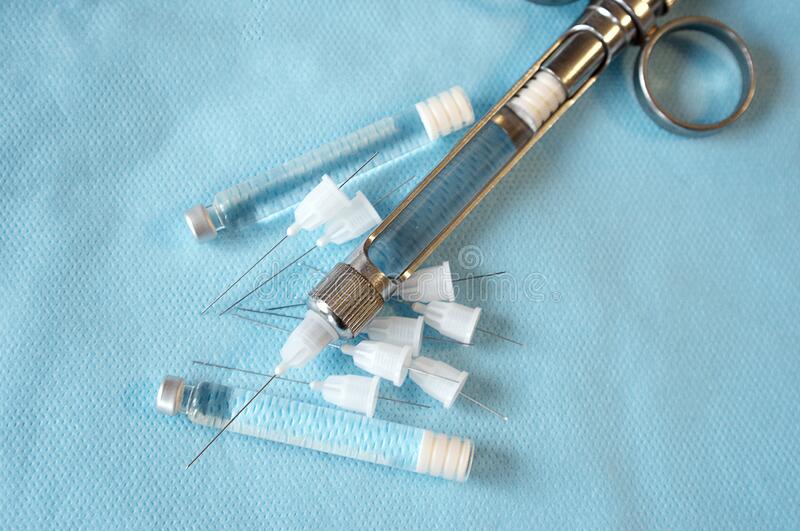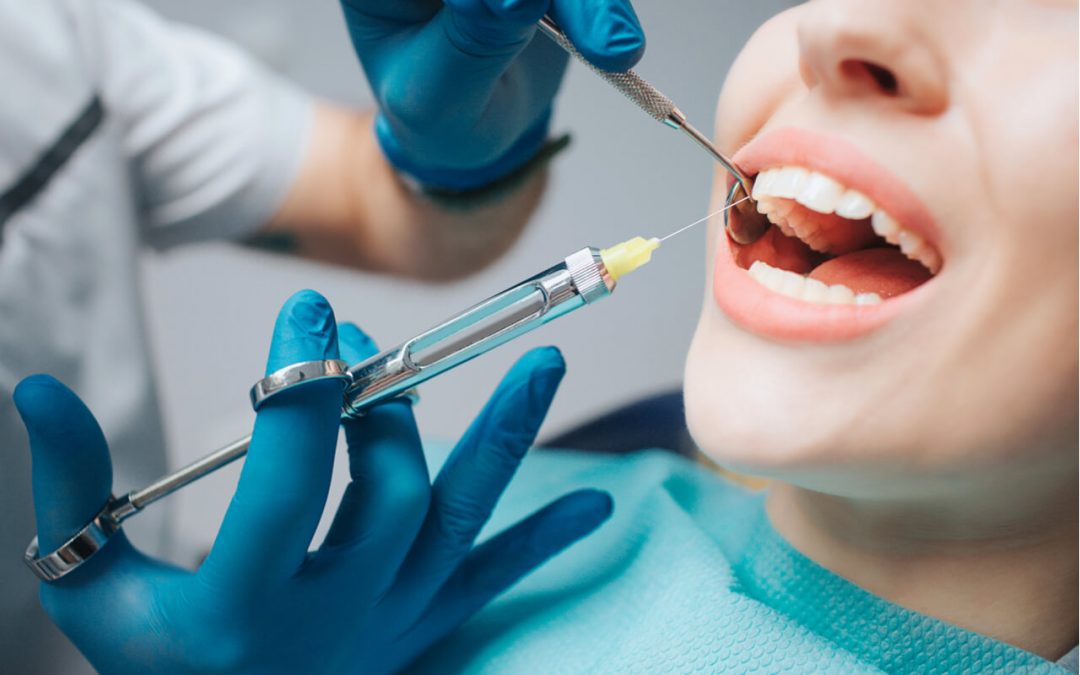Dental anesthesia needle
A dental anesthesia needle is a type of needle used to administer local anesthetics during dental procedures. It is generally made from stainless steel and has a tip that is either beveled or round. The beveled tip can be used to inject the anesthetic directly into the tooth pulp, while the round tip can be used to inject it under the gum line.
Dentists use dental anesthesia needles to numb or deaden a certain area of the mouth so that they can perform complex surgical procedures such as root canal therapy. Before using this device, dentists must get permission from their patients.
Dental anesthesia needle
A dental anesthesia needle is a thin, hollow tube with a sharp point at the end. It is used to deliver a numbing agent to the gums before a dental procedure. The numbing agent deadens pain and makes it easier for the dentist to perform certain procedures on your teeth.
Dental anesthesia needles come in different sizes and lengths. They can be straight or curved and have a blunt tip or sharp point. Dental anesthesia needles are commonly made of stainless steel, but some may be made of other materials such as plastic or titanium.
Dental anesthesia needles are designed to be inserted into your gums and then pushed through them until they reach the other side. This allows the numbing agent to reach all parts of your jaw that need to be numbed before treatment starts.
The exact type of anesthesia used will vary depending on what kind of procedure you’re having done, but most dentists use Lidocaine (lido-KAY-ne). LidoCaine is an anesthetic that blocks pain signals from reaching the brain while still allowing you to feel touch sensations like pressure and temperature
In dentistry, anesthesia is the use of medications to numb a part of the body to relieve pain. It is a standard technique used in dentistry and other surgical or medical procedures.
The first use of local anesthetics in dentistry was in 1884 by Horsley and Clarke, who applied cocaine solution to a tooth before extraction. In 1885, William E. Horner reported that cocaine was ineffective as an anesthetic for dental procedures.[1] Cocaine was later replaced with procaine, a less toxic derivative of cocaine that had similar effects on patients, but could be given safely in much higher doses.[2] Today, lidocaine and its derivatives are the most common local anesthetics used in dentistry.
Anesthesia differs from analgesia and sedation because it prevents sensation rather than just masking it. Analgesics reduce or eliminate pain while sedatives produce sleepiness or drowsiness.[3]
Dental anesthesia is usually provided by dentists (or oral surgeons) although some emergency medical technicians may administer it under special circumstances
Dental anesthesia needles are used to numb the area of the mouth that needs to be worked on. They are thin and very flexible, to allow them to easily be inserted into the gums. Although they look like hypodermic needles, they are designed for use in the mouth.
The tip of a dental anesthesia needle is very thin, so that it can pierce through the skin and into the gums without causing any pain or discomfort. The tip also has little ridges on it, which help it grip onto the skin as it passes through.
The shaft of a dental anesthesia needle is thin and flexible. This allows it to bend slightly, so that you can insert it into your mouth without having to bend your head back too far or hold your mouth open too widely.
Does dental anesthesia needle hurt?

Dental anesthesia is the process of numbing the gums and mouth with a local anesthetic. The numbing effect is temporary, so patients may feel some pain after their procedure.
The following information will help you understand what to expect during your dental procedure:
How do I prepare for dental anesthesia?
You will receive specific instructions from your dentist. You may be asked to refrain from eating or drinking before your appointment.
What happens when I have dental anesthesia?
Your doctor will insert a needle into the gum tissue near the site of treatment. This injection contains a local anesthetic that blocks pain in the area where it is injected. The needle can cause mild discomfort as it enters your gums, but no more than a sharp pinch. Once the injection is complete, you will be numb for about 30 minutes to one hour before the sensation returns to normal levels.
The needle used in dental anesthesia is very fine and small. It is not painful, but you may feel a little sting when the anesthetic is injected into your gum tissue.
If you have a fear of needles or have had bad experiences with needles in the past, talk to your dentist about it. They can help you overcome these fears by making sure that you are comfortable and relaxed before they begin the procedure. Your dentist will also make sure that they do not inject the anesthetic into any sensitive areas of your mouth.
If you are worried about having a dental procedure done, try to relax and focus on something else while it is being done. This can help reduce any pain or discomfort that may be felt during the procedure.
Dental anesthesia is a local anesthetic that can be used for dental procedures. The needle used to deliver the anesthetic is typically short and thin, and it’s not usually painful when it’s inserted into your gum and jawbone.
Dental anesthesia can help you relax during your appointment and reduces the pain of any subsequent procedures, such as fillings or extractions. In some cases, though, you may need to take additional medications before or after your appointment to ensure you’re comfortable throughout the process.
The needle used for dental anesthesia is very thin and short — typically less than 1/4 inch (0.6 cm) in length. It’s also hollow so that the anesthetic can be injected through it using a syringe or device called a trocar. The syringe is attached to the end of the needle so that the medication flows out once it’s inserted into your gum line or jawbone.
Most people don’t feel anything when they receive dental anesthesia because there aren’t any nerves in this part of your mouth or face (unless there are other problems). If you do feel something, it’s likely because your dentist has accidentally struck a nerve rather than hitting bone when inserting the needle into your gums or jawbone
Anesthesia is a drug that makes you feel numb. It’s used before and after surgery, as well as during dental procedures.
Anesthesia can help you relax and feel less pain during medical procedures. The type of anesthesia you get depends on the procedure and your health. For example, if you need surgery on your mouth or jaw, your dentist may use local anesthesia to numb the area where he or she will work. If you need a root canal, general anesthesia may be used so that you’re asleep through the entire process.
The amount of pain you feel during anesthetic shots depends on where they’re placed and how much numbing medicine is used. Here’s what happens:
A needle is inserted into a vein in your arm or hand; this causes some discomfort but no pain. The needle goes directly into the vein without being pushed through tissue first (as with IVs). This makes it easier for doctors to control how much medicine gets into your blood stream.
The needle injects a small amount of anesthetic into your vein; this causes no pain because it’s injected directly into the vein by someone who knows what they’re doing (a doctor or other trained professional).
You’ll feel a little sting when the needle goes into
What are the different types of dental anesthetic needle?
Dental anesthetic needles come in two basic types:
Monopolar needles, which are used to administer pain-free local anesthesia. They have a single tip and are placed into a nerve or other soft tissue to numb the area or provide analgesia.
Bipolar needles, which are used for more invasive procedures such as root canal therapy and pulpotomy. They have two tips, one of which is connected to the anesthetic machine while the other remains outside of the patient’s body until it’s time to administer anesthesia.
There are many different types of dental anesthetic needles. The most common include:
Air-driven syringes. These are the most commonly used devices for delivering local anesthesia and are found in most dental practices. This type of needle is inexpensive, simple to use and has a relatively short learning curve.
Needle-free injectors. Needle-free injectors deliver drugs by aerosolization or high velocity impaction. They are used for both local and regional anesthesia, but some manufacturers recommend using them only for infiltration anesthesia around the mucosal lining of the mouth and throat. Needleless injectors reduce the pain associated with injections because there is no physical contact between a sharp object and soft tissue. The lack of pain associated with these devices may make it easier for patients to receive their treatment without becoming anxious or nervous about being injected by a needle.
Syringe pump injection systems, which are used for infiltrative procedures such as root canal treatment. These systems do not use needles; instead they dispense anesthetic in measured doses through a catheter into the operative site (e.g., tooth pulp).
There are three main types of needle used in dental anesthetics.
The most common is the 23 gauge needle which is thin and can be broken easily. It has a sharp point which makes it easier to insert into the gums without causing pain or damage. This type of needle is used for most procedures and is usually made from stainless steel or plastic.
The second type of needle is called the 20 gauge needle and is slightly bigger than the 23 gauge. It works best for patients who have sensitive teeth, as it causes less damage when inserted into the tooth. The size of this needle means that it can be difficult to break if you need to remove it quickly after an injection, so it’s best to use when you know you won’t need to remove it quickly after an injection (such as with a filling).
The third type of needle is called a 27-gauge needle which isn’t as thick as either of the other two types of needles mentioned above but still gives good results when used in treatments such as fillings or crowns
There are many types of dental anesthetic needles. The most common are the luer-lock syringes and disposable needles. These can be used with any type of needle that has a Luer lock tip.
The Luer lock tip is a small plastic tip on the end of the syringe, which allows you to attach other devices such as iv catheters, breathing tubes and more.
The advantages of using a luer-lock syringe include:
Easier to use than other types of dental anesthetic needles because there is less risk of contamination due to the plastic tip. The plastic tip prevents fluids from entering the needle shaft and causing infection inside your patient’s body.
You can use these types of dental anesthetic needles without having to sterilize them before each use. This will save you time as well as money!
What gauge is dental needle?

Gauge is the diameter of the needle, measured in thousandths of an inch (0.001). The smaller the gauge number, the larger the diameter of the needle. For example, a 22-gauge needle has a larger diameter than a 24-gauge needle.
The gauge of a needle is the diameter, measured in hundredths of an inch. The larger the number, the thinner the needle. For instance, a 20-gauge needle is smaller than a 16-gauge needle.
The gauge of a needle refers to its diameter rather than its length. The higher the gauge number, the smaller the diameter of the needle. For example, a 20-gauge needle has a larger diameter than a 16-gauge needle.
The most common gauges used by dental professionals are:
23G – this is used for filling teeth and extracting teeth that are not broken or cracked. It can also be used to perform root canal treatment on healthy teeth or to place crowns on teeth with large cavities where there isn’t enough tooth structure left to support them properly.
25G – this is used for filling teeth and extracting teeth that are not broken or cracked. It can also be used to perform root canal treatment on healthy teeth or to place crowns on teeth with large cavities where there isn’t enough tooth structure left to support them properly.
27G – this is used for filling teeth and extracting
What gauge is dental needle?
The gauges of dental needles are different from the standard size. The most common sizes are 18G and 20G. If you want to buy them, you can go to the local pharmacy or online store. The following chart shows the conversion of gauges:
18G = 0.12mm
20G = 0.16mm
14G = 0.17mm
There are several types of dental needle, including:
Gauge
Gauge refers to the diameter of the needle. The lower the gauge number, the thicker the needle. This is important because as a dentist, you want to use a thinner needle for two reasons:
It will hurt less for your patient. A larger gauge means that there is more surface area touching the gum tissue, which can cause more pain.
You can work faster with fewer passes through the tissue. A thicker needle requires more effort to push through and may require multiple passes to remove all of the decay.
What kind of needles do dentist use?

Dentists use a variety of different needles to perform dental procedures. The type of needle used depends on the procedure being performed and the patient’s medical history.
For example, some types of needles are used when performing root canal therapy or placing implants. Other needles are used during routine dental procedures such as filling cavities or taking x-rays.
The most common type of needle used by dentists is called a “wooden toothpick” because it resembles a toothpick in shape and size. These are used for taking x-rays, removing blood from the mouth, and other procedures that do not require injecting anesthetic into the gum tissue or bone.
Dental needles are a tool used by dentists to remove plaque, dead skin cells and other substances from the teeth. Dental needles come in several different sizes and materials.
The size of the needle will determine how deep it can penetrate the gums and how much pressure can be applied. The type of material used for the needle determines how sharp it is.
The most common types of dental needles include:
Gold plated stainless steel – This type of needle is used for general cleaning because it is strong, durable and flexible. It can also be sterilized so that it can be reused if necessary.
Monofilament nylon – This type of needle is used when there are no fillings present on the tooth surface because it has less risk of breaking than metal or plastic ones do.
Dentists use several different types of needles to perform procedures. Some are used for painless injections, while other types are used for more invasive procedures.
Needles range from very thin and long to short and thick. While all of these needles have their place in the field of dentistry, they are not used interchangeably.
Hypodermic Needle
The hypodermic needle is the most common type of needle used by dentists today. The name is derived from its ability to pierce the skin as it delivers a drug or anesthesia into the body. This type of needle is typically either a single-use device or made with materials that can be sterilized after use.
This type of needle has a beveled tip, which allows it to enter the skin easily while minimizing trauma to the patient’s skin and tissue. However, when this type of needle is used on sensitive areas like the gums or cheeks, there may be some discomfort associated with its use because these areas have more nerve endings than other parts of your body do.
Dentists use several different kinds of needles to administer local anesthesia. The type that you’ll receive depends on the level of pain relief that is required, which usually depends on the procedure being done.
Syringes are used to deliver medications directly into the mouth or throat. Syringes are small and can be used for short procedures such as administering fluoride treatments, placing sealants and applying topical fluoride gel and varnishes.
Needles are also used by some dentists to inject local anesthetic directly into a tooth or gum area before performing a dental procedure. This type of needle is very small and prevents direct contact between the patient’s nerve endings and the anesthetic solution. The needle is inserted into the gum tissue around the tooth with a small syringe attached to it so that the dentist can inject just enough anesthetic solution to numb the area where surgery will take place without causing any discomfort to the patient. Needle-free injections use ultrasound technology instead of needles to deliver medication into soft tissue during procedures such as wisdom tooth removal or oral biopsies.
